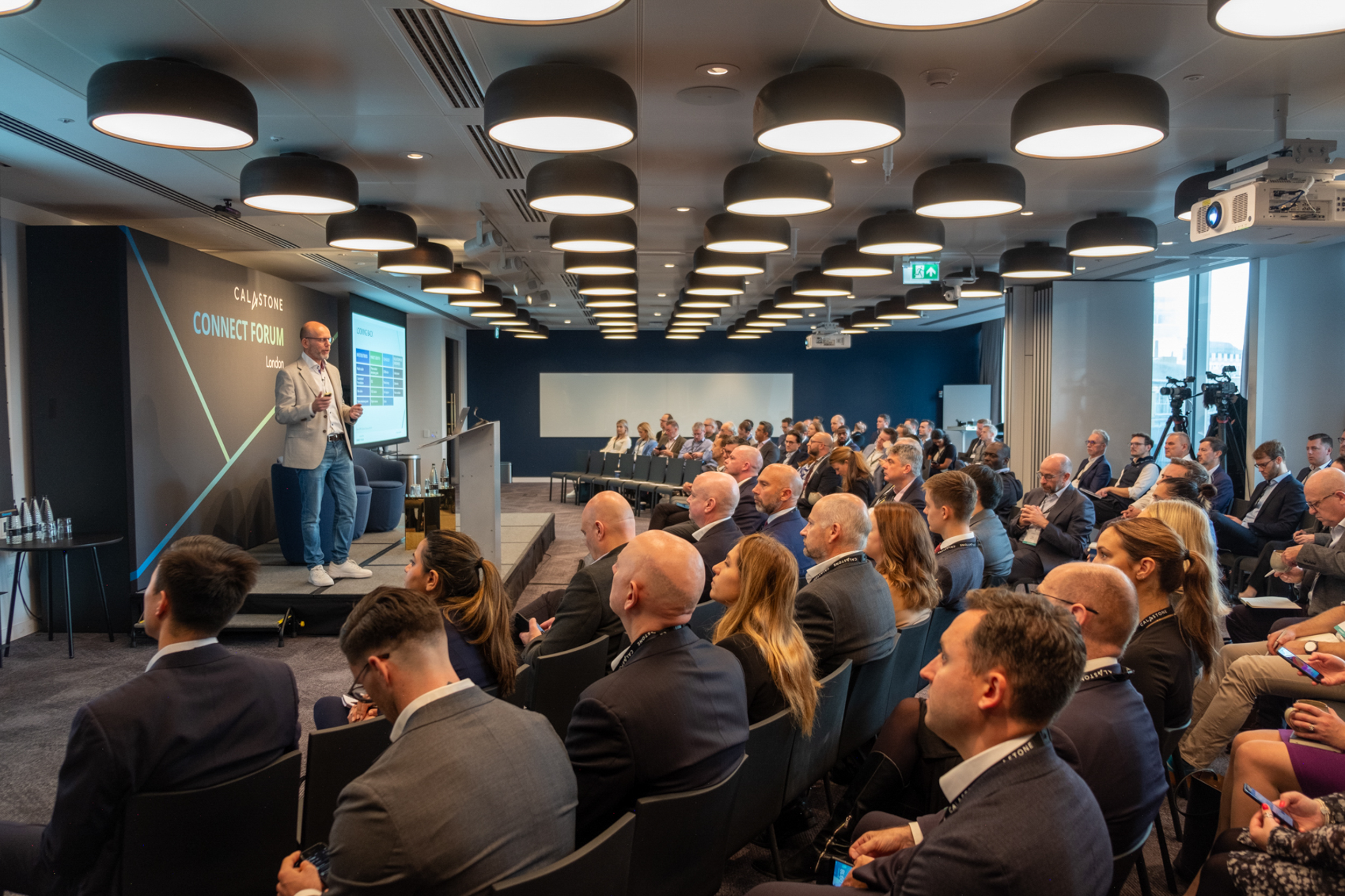Is the funds industry delivering value to end-investors? This has often been a difficult question to answer due to the sector’s opaque intermediation processes, but its importance grows every day.
Customer expectations, more often associated with Millennials – mobility, immediacy, transparency – are now pervasive, as our personal experiences of the digital age inform our expectations of all service providers.
In response, sources of competition have intensified as new entrants and incumbents alike develop new value propositions that are reshaping the dynamics of the funds industry.
In a survey of investor behaviour conducted last year by Calastone, Baby Boomers and Generation X were barely less willing than Millennials to favour digital channels for key investment decisions, with growing numbers of all cohorts willing to buy investment services from non-traditional players. And that was before the full impact of a pandemic which accelerated the demand for digitalised investments.
As incumbent providers, asset managers have the benefit of expertise and established relationships. But many are wedded to old models, failing to grasp new opportunities offered by digital technology innovation to strengthen relationships and deepen understanding. At Calastone’s virtual Connect Forum (view the sessions here), held in December, experts flagged personalisation, education and ‘easibility’’ as key themes for an industry looking to deliver satisfaction – and ideally delight – to a demanding audience.
Talking the talk
Although technology may be the enabler, an appreciation of human needs has to be the starting point for a more investor-centric industry. Calastone’s investor behaviour survey showed that confident investors were active investors, suggesting the need for the industry to up its game in terms of education and simplicity, both to bring new customers into the fold and keep existing ones engaged.
Our survey showed strong appetite for investing in smaller increments and lower costs, but other trends also emphasise a need for flexibility.
The disruption caused by the pandemic to investor earnings prospects may increase demand for greater optionality on investors’ monthly contributions, without cost or complexity. Similarly, the growing desire of investors to align their portfolios with their principles – or simply take greater control – calls for greater transparency, to help customers look through to the activities of investee companies and thus the ‘real world’ impact of their decisions.
There has long been a structural disconnect between fund managers and end-investors, but in the digital age that distance is becoming a serious threat to the relationship. Whether by advisors or platforms, funds are intermediated by third-parties. This does not necessarily preclude clear, targeted communication and greater overall transparency of the investment process.
Jackie Boylan, Head of UK Advisor Platform, Fidelity International, explained how her firm had increased transparency by developing a tool that allows end-investors to compare their views with how their fund’s portfolio manager actually voted at the AGMs of an investee company. But she admitted that fund managers had failed to leverage social media to communicate on a more personalised, targeted level with customers, noting the need to learn to talk in every-day language, about achieving personal life goals, rather than beating benchmarks.
“We’ve still got a long way to go with investor education,” she added.
Machine-made services
New models that leverage digital technology to deliver innovative new customer-centric offerings are growing faster in regions were incumbents are less firmly embedded. Across Asia especially, tech is making financial services more human, rather than less.
Firms such as Singapore-based GrabInvest are cutting the red tape as well as the size of investments. Reducing entry costs down to S$1 brings investment within reach of many previously excluded financially. But with these first-time customers comes a responsibility for safety, as well as access and convenience.
According to Martin Pickrodt, head of investment risk at GrabInvest, the firm’s robust technology achieves scale and trust. It can only offer investments to millions in tiny increments if it is “ruthless” about removing manual processes, fiercely focused on security, and offers seamless onboarding and KYC.
“We also make sure the asset classes are high quality and stable. Investor education becomes even more important, as does the way the products are presented. The onus is on the product provider,” he said.
Both diversity of customer demand and Asia’s regulatory fragmentation means service providers have to cater for very niche geographic markets, says Kit Wong, CEO of Lu International, a Singapore-based digital wealth management platform, specialising in alternative investments.
“You’ll need to be hyper-localised and agile enough to change at a moment’s notice,” he said.
Technology can already handle this, observed Wong, suggesting every customer can have a different dashboard and receive a different service, driven automatically and dynamically by the client’s own preferences.
But this functionality can only be fully explored if a relationship of trust and understanding is maintained. Even though Wong’s clients and products are at the more sophisticated end of the market, clear communication about products remains critical to success. “. We should use all the resources available on an app – not just text but animation etc – to pump out education to customers,” he said.
Make it easy
We’re all familiar with the ability of technology-based services to delight. We’ve also felt the frustration when expectations are undermined by errors and glitches. It is, of course, people and processes that enable technology to be harnessed to meet individual need at scale.
Before delighting any customer, the service supplier must get the basics right. As well as delivering a personalised and easy-to-use service, this means responding to changes and problems quickly and effectively.
One panel at the Connect Forum shared customer service experiences across the industry, highlighting the parallels between transfer agents servicing asset managers, and managers servicing their own clients.
Len Sutton, executive director and global transfer agency product lead at JP Morgan, said service providers should look to focus their processes and culture on “easibility”.
“If you make it easy for your clients to deal with you, it’s a surefire way of keeping them happy, building a relationship and making sure investors are getting a level of service aligned with your client’s brand,” he said.
The inherent complexity and compliance obligations of finance sector value chains means technology and process must be aligned to deliver consistently and quickly, allowing efficient escalation where necessary. But the human element remains crucial: front-line staff must be trained and empowered to respond to customer challenges.
Customer-facing staff can convert ‘make it easy’ instruction into action more easily than ‘make sure you provide excellent customer service’, Sutton noted.
Stay on your game
Micaela Forelli, managing director for Europe at M&G International Investments, emphasised the importance to customer satisfaction both of investing in talent and culture and helping clients to understand the value of investing in their own future wealth. But she also acknowledged the paramount priority of responding to shifting demand.
“For the asset manager, the challenge is to keep up with the rapidly shifting pace of changes that come from investors,” she said, citing growing demand higher yield products in a largely low-yield environment, as well as for sustainable investment solutions.
These shifts can rapidly gain momentum. According to Calastone’s Fund Flow Index for Q4 2020, Investors bought a record £1.1 billion of ESG funds in a single month. This is equivalent to the entire inflow from 2015-2018 combined and means that ESG funds accounted for more than half of all flows into equity funds in 2020.
Much, but not all, of this demand reflects the priorities of individuals in the earlier accumulative stages of their investment journey. For the funds industry, building lifelong relationships with this cohort will be challenging but rewarding.
Experienced heads have long known the value of loyalty and satisfaction to customer acquisition. In this highly connected digital era, that value multiplies as delighted customers share experiences across digital networks, recommending preferred providers, driving more business to them, and investing in that human connection over time.
As Sutton remarked, “You’ll need to stay on your game.”





















